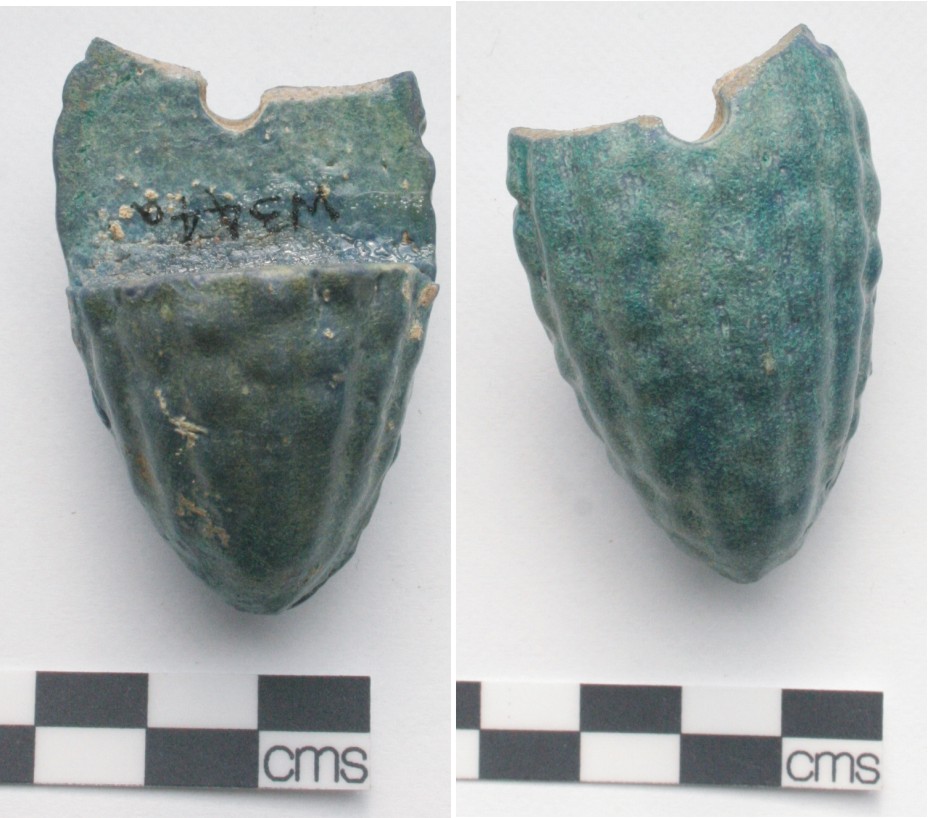W344a
W344a
 Faience grapes from Amarna marked T36.11. These are around 5cm long.
Faience grapes from Amarna marked T36.11. These are around 5cm long.
The grape was made of two identical parts which were removed from the mould, partly dried and joined with slurry before firing. Grape clusters are found in scattered clusters at Amarna. They are also found on other New Kingdom sites. In manufacture, the upper half of one side of the cluster was removed and holes pierced in the other for attachment to a beam.
A very large faience grape bunch (over 15cm long) was found in a garden shrine of T36.11 in the 1929 excavations, object number 29/239 (Frankfort and Pendelbury 1933, 25). The ceiling of the shrine seems to have been decorated with painted grapes. It has been suggested that garden shrines were associated with the royal family (Stevens 2006, 253). Elsewhere, grapes seem to have been used to decorate the royal throne or as foundation deposits (Brovarski et al. 1982, 42). They may well have been a symbol of royalty. See also Friedman, F.D. 1998, 189–190.
Depictions of vines are particularly popular in the New Kingdom and appear on tomb walls. It seems probable that the plant was a symbol of rebirth, perhaps because the vine appears to die back each year and then is ‘reborn’. Moreover, the grape harvest coincides with the annual flooding of the Nile, a time of rebirth. Finally, the imbibing of alcohol was thought to bring one closer to the gods. It has been suggested that wine was put in tombs as part of the transfigeration process (Jané 2013).
References and further reading
Brovarski, E., Doll, S.K. and Freed, R. E. 1982. Egypt‘s Golden Age. The Art of Living in the New Kingdom. 1558-1085 BC. Boston: Museum of Fine Arts Boston.
Frankfort, H. and Pendlebury J.D. S. 1933, The City of Akhenaten Part II, The north suburb and the desert alters: the excavations at tell el-Amarna during the seasons 1926-1932. London: Egypt Exploration Society.
Friedman, F.D. ed. 1998. Gifts of the Nile Ancient Egyptian Faience. London: Thames and Hudson.
Jané, M.R.G. 2013. Three wines for Tutankhamun’s transfiguration. Ancient Egypt Magazine. April-May 2013, 26–31.
Stevens, A., 2006. Private Religion at Amarna. The Material Evidence. BAR International Series 1587. Oxford: Archeopress.